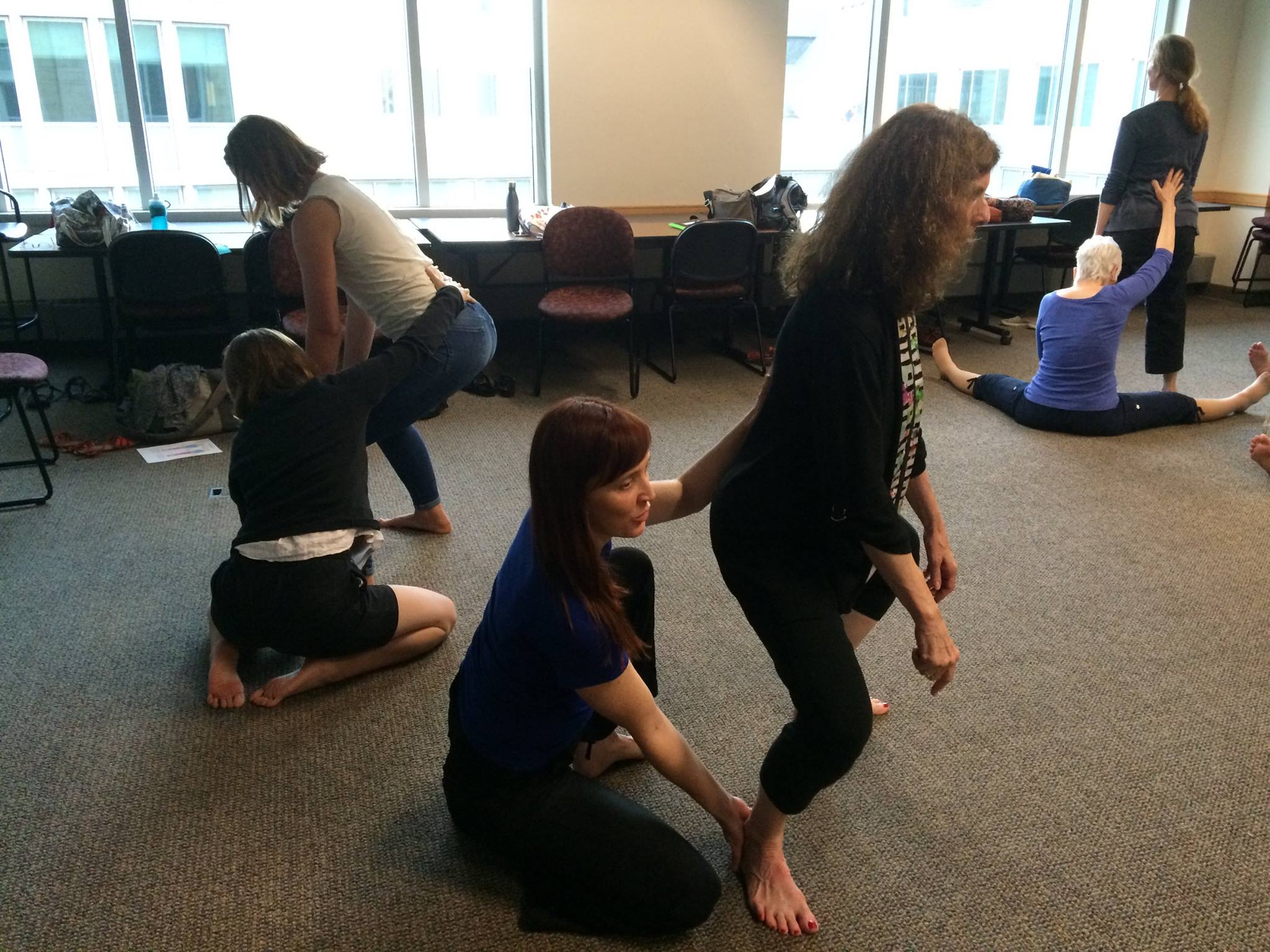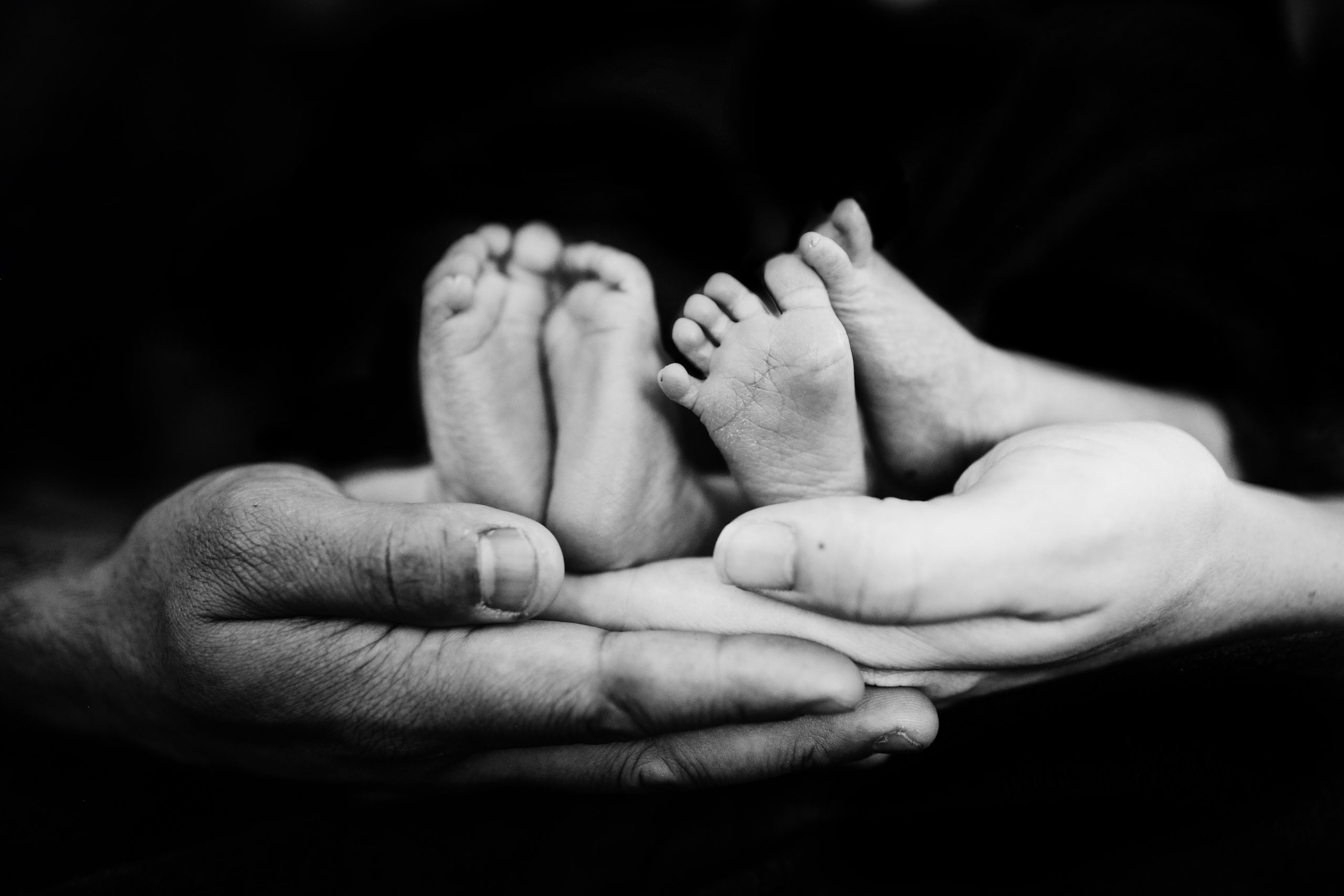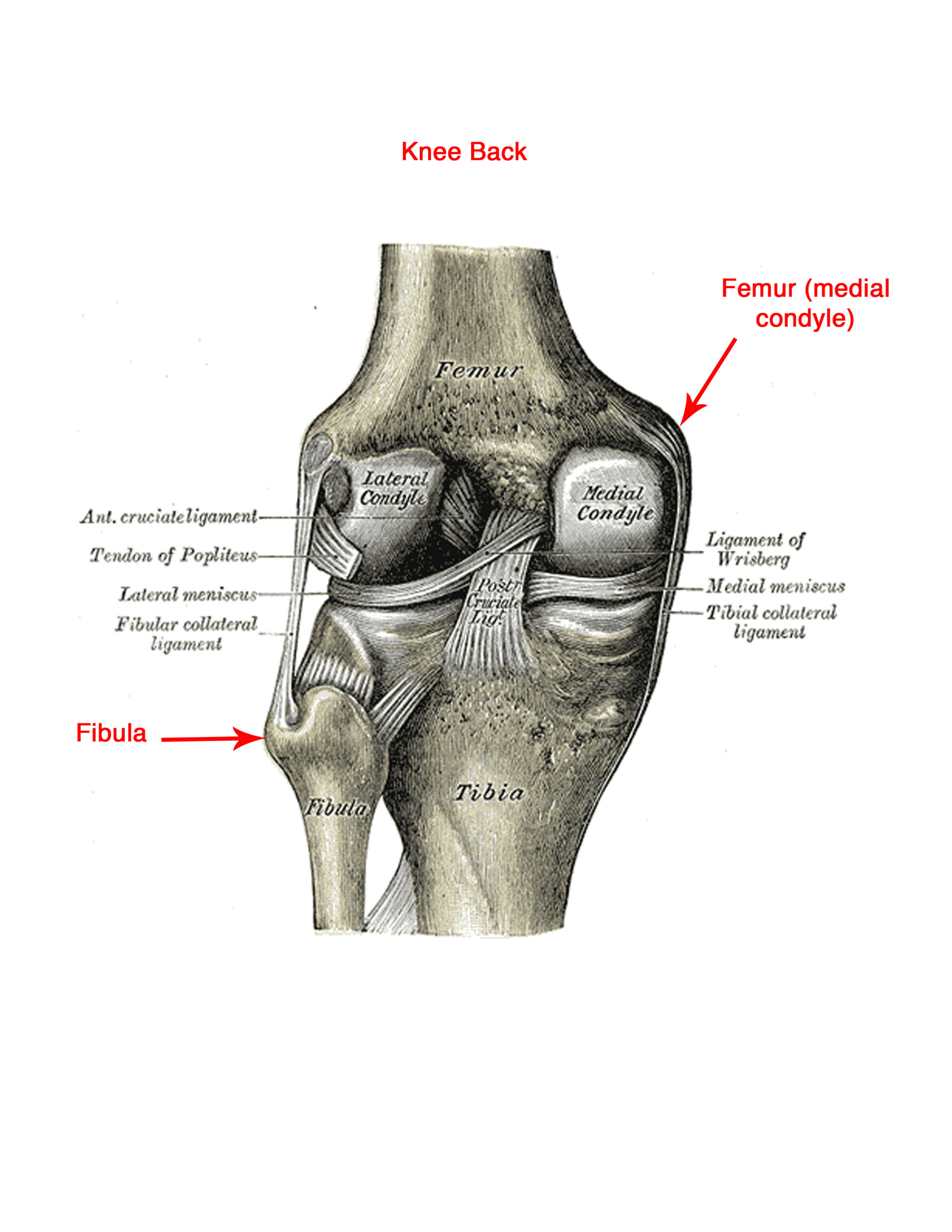
Exploring different kinds of mini-squats with a range of ages and bodies
CLICK HERE TO FOR INFORMATION AND TO REGISTER FOR THE NEXT MOBILE BODY ALIGNMENT INTENSIVE ON LEGS. ONLY 12 SPOTS AVAILABLE SO GET YOURS SOON!
Apologies – last weeks newsletter had a bad link! If anyone wants to check it out, here is the article about proprioception and how they have located a gene that is responsible for conveying proprioceptive information from the body to the brain. This information about internal movement and pressure is not only important for motor control and movement, but also for other autonomic functions like blood pressure regulation! Amazing. So what that means is if you can’t feel internal pressure in your body it contributes to high blood pressure, which is related to heart disease and other stress related conditions.
“Just appreciating all the things we can feel can invoke a sense of awe. If one of us snuck up behind you and moved a single hair, you would immediately know it,” Chesler says. “This is one of the most amazing biological machines.”
The sensory experience of mobility is a big focus of all the work that I do. I want to restore that sense to your body in all its glorious detail. The feeling is gliding and smooth, sometimes exhilarating, sometimes soothing. When it comes to aging, however it can begin to be scary because your balance is more tenuous! You may find yourself bracing and stiffening, narrowing your range of movement. This in turn can start to make you feel weak because your muscles are not moving within their full range. Research has shown that range of motion and strength are in fact intimately related.
The solution: If you get dizzy, just pause in your movement until you feel stable again. This works great if you are dancing (yes, stillness is allowed in dance class!), or walking, or doing any other kind of movement that stimulates your sense of balance.
Pausing is really different than bracing or stiffening. And if tipping off your vertical balance causes dizziness, you can find more upright ways of exploring mobility, which is going to keep you strong as well! Experimenting with mini-squats, for instance, is a great way to keep your legs strong and challenge your habitual range of motion. Can you slowly go up and down, as if you were going to sit on a chair, without ever landing your butt on it? Do it slowly – not fast, as in some fitness regimens – so that you can challenge your own habitual range of motion. You should feel a burn in your muscles, and that’s good! But you should not feel pain in your joints.
When we squat, for most of us there is a point at which our knees just…stop moving. Usually it’s a bit too early, not activating all the muscles of the legs and back as fully as possible. And then we fall into the chair. How can we counter this habit?
Here is an image of one of Mobile Body Alignment Points in your knee. Each one of these landmarks, though strongly bound by ligaments, is designed to have a little or a lot of movement potential. Not bracing one of these points against another (for instance, your tibia or lower leg against your femur, or upper leg) will keep your muscles toned, alert, working eccentrically. It actually feels great! This image is looking at a person’s right leg from the front:

Explore each one of these landmarks in the movement of mini-squat and standing. Explore them separately, and together. If you do, you will have woken up every muscle in your legs and many important muscles in your back. You will keep your legs strong and supple.
Enjoy!



